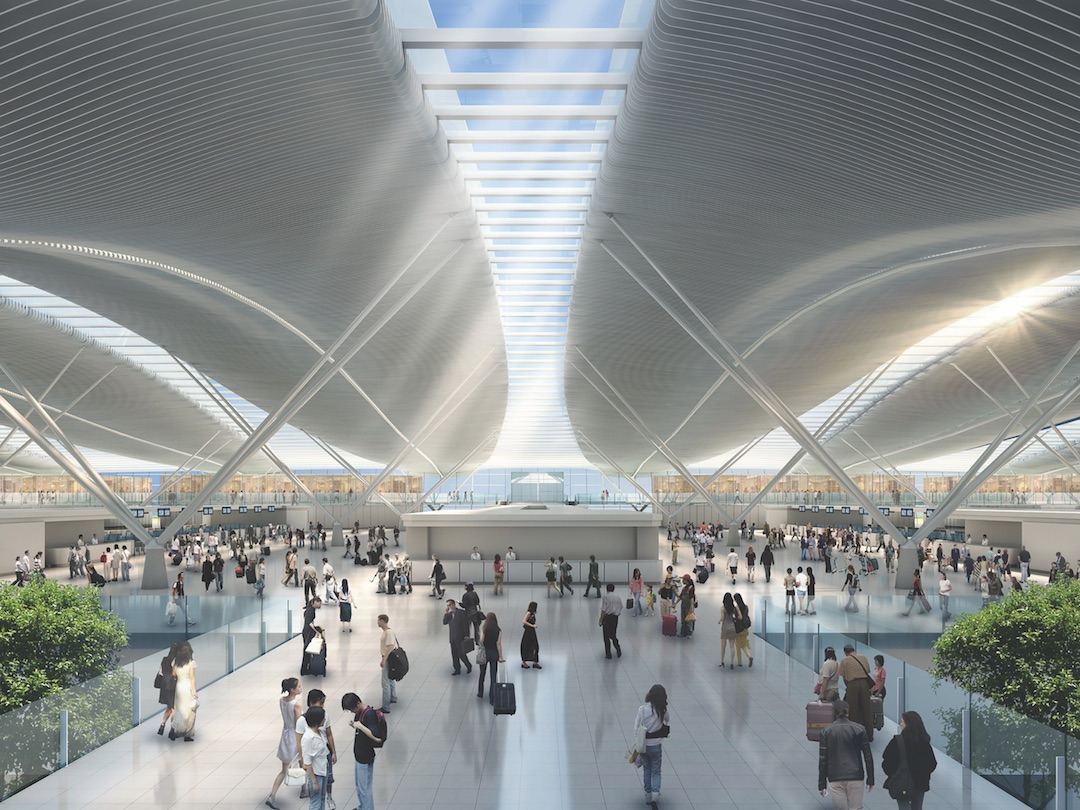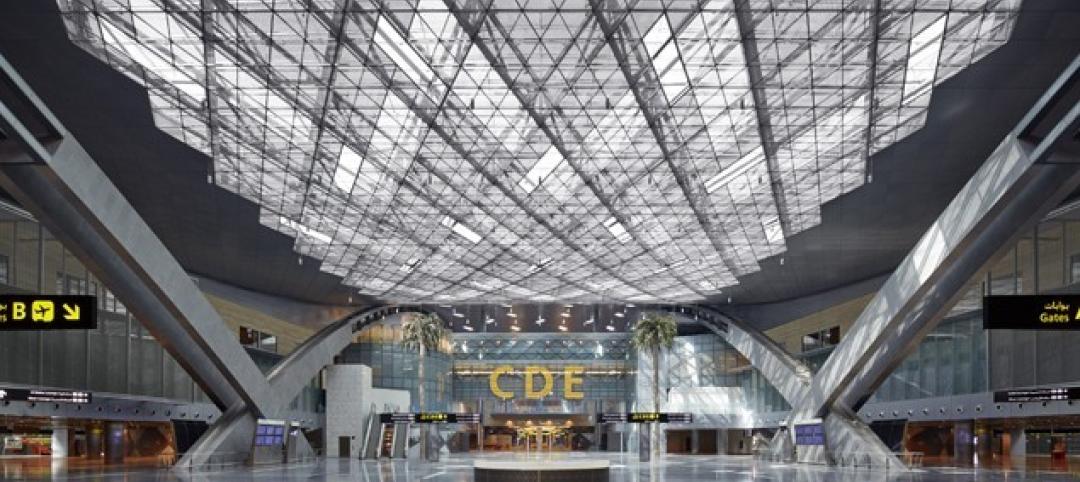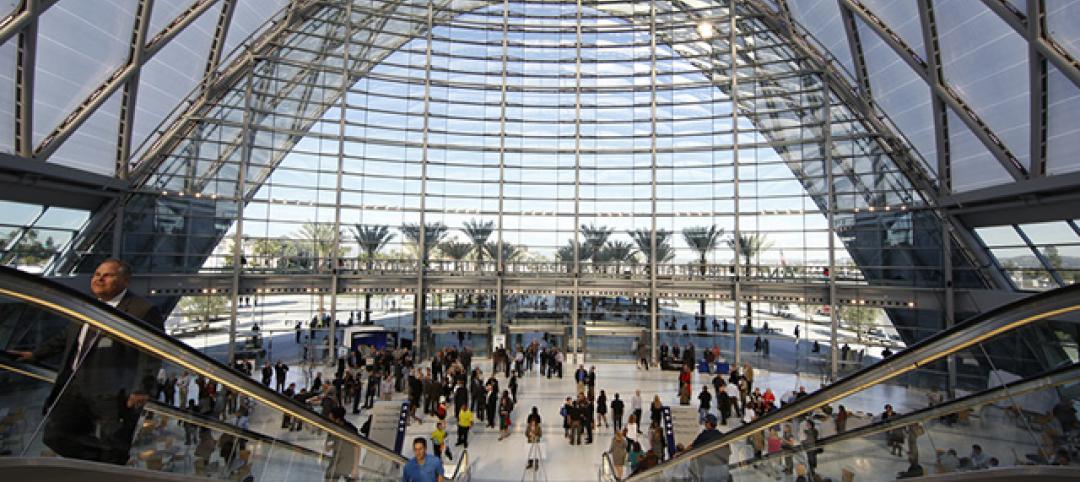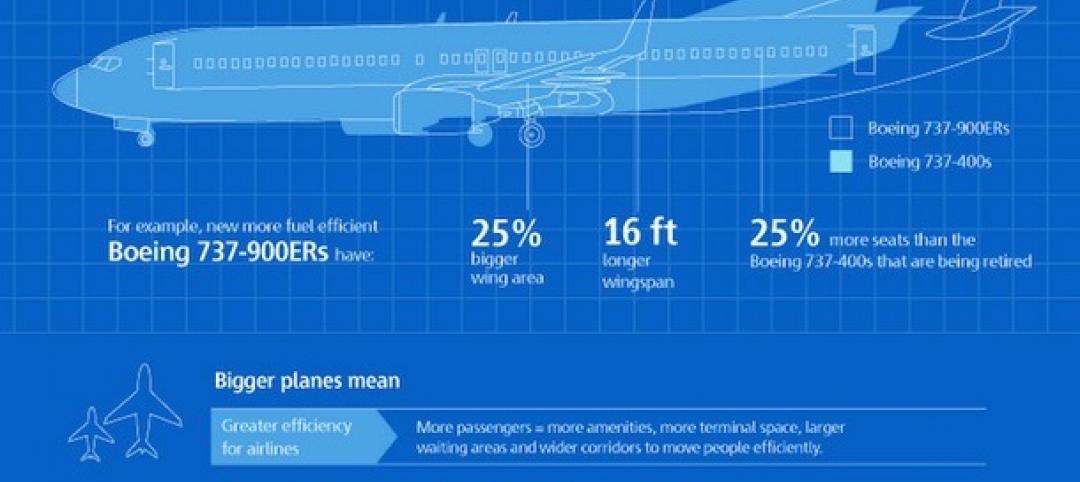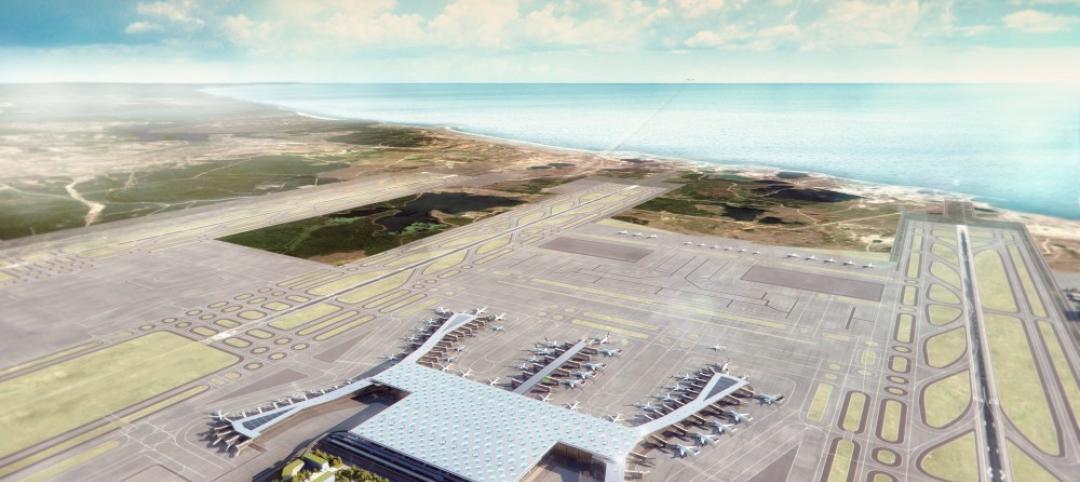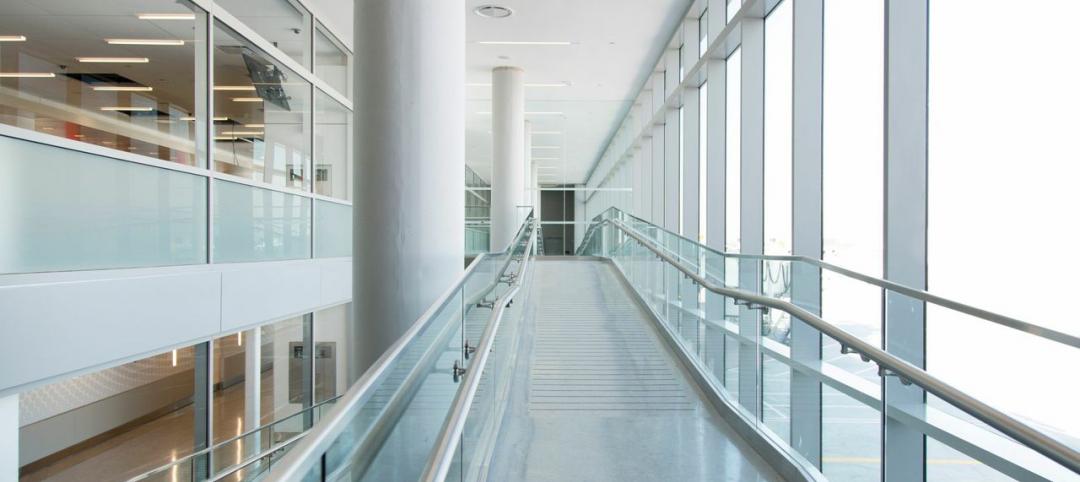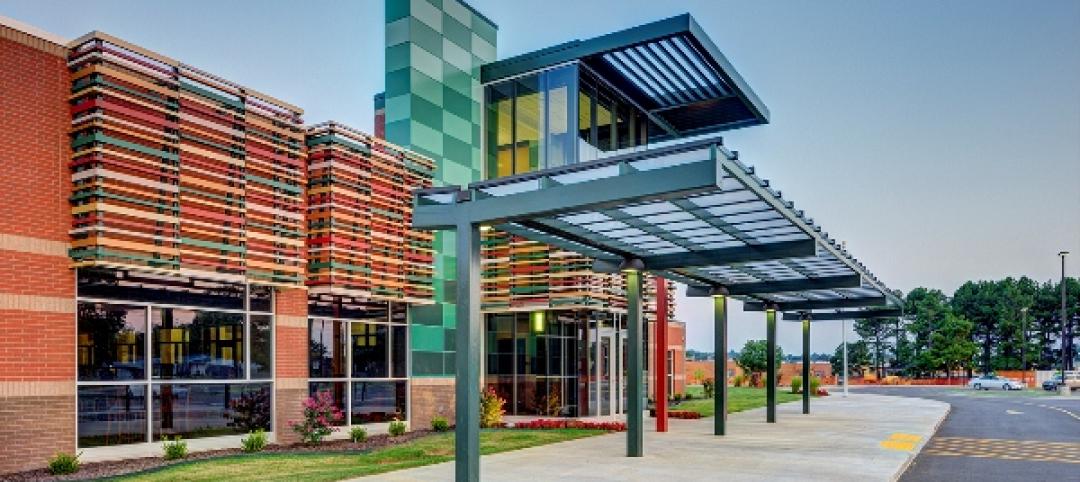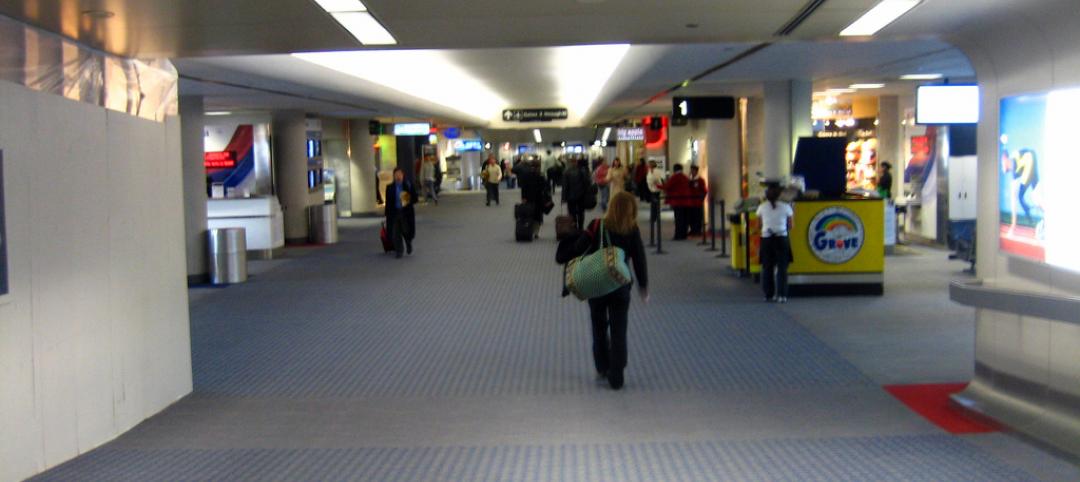Domestic and foreign airlines serving the U.S. carried an all-time high of 965 million passengers in 2017, according to the U.S. Department of Transportation. Airports Council International estimates that 8.8 billion flyers used airports worldwide last year, up 6.6%.
Airport operators everywhere are scrambling to keep pace. “Construction and expansion of airports is growing at a rate of 5–10% or more around the world,” says Jay Fraser, Vice President/General Manager of Turner Construction’s Aviation Group. Turner is adding a three-level, 50,500-sm international port at Cam Ranh International Terminal in Vietnam to handle 2.5 million passengers a year.
Turner and PLC Construction Services are working on the Federal Inspection Services (FIS) Relocation and Expansion project at San Diego International Airport’s Terminal 2 West, which will house Customs and Border Protection services.
U.S. AEC aviation-sector firms are benefiting from the high level of deferred investment in infrastructure, airline profitability, and the strength of the dollar, note Keith Thompson and Terence Young, Principals in Gensler’s Los Angeles office.
See also: Top 45 Airport Facilities Architecture + AE Firms - 2018 Giants 300 rankings
See also: Top 55 Airport Facilities Engineering + EA Firms - 2018 Giants 300 rankings
See also: Top 55 Airport Facilities Contractors + CM Firms - 2018 Giants 300 rankings
Skidmore, Owings & Merrill is lead designer for the new 450,000-sf International Arrivals Facility at Seattle-Tacoma International Airport. It will add eight gates for widebody aircraft and 50 more passport checkbooths and kiosks.
AEC firms that practice design-build or integrated design delivery methods and are open to public-private partnerships are in the sweet spot for airport projects. “Clients are looking at delivery models that save money and time,” says Bijan Pashanamaei, PE, Director of AECOM Global Aviation.
He notes that the design and build portions for the modernization of Phoenix Sky Harbor International Airport’s Terminal 3 were wrapped into a single contract that included DWL Architects + Planners, SmithGroupJJR, and Corgan.
AEC firms are using quicker delivery methods incorporating modular and prefabricated components. “Many clients start with the desire for modular construction," meaning offsite assembly to minimize on-site disruption to ongoing operations, says SOM Director Derek Moore. “This makes sense at very busy airports with little elbow room for traditional construction.”
Mortenson Construction used “substantial fabrication” to deliver an Alternate Utility Facility to support Port of Seattle’s SeaTac airport in the case of disruptive high-wind events, says Mark Baughmam, DBIA, LEED AP, a Construction Executive with Mortenson.
using technology to ease travel anxiety
Turner's Jay Fraser calls technology “the most critical design advancement” for airports. At the FIS facility in San Diego, interactive wayfinding displays and self-boarding gates that
enable planes to load without attendants are being installed.
One new feature at airport gates is a “hearing loop,” which wirelessly transmits boarding announcements to hearing-impaired passengers via their hearing aids or cochlear implants.
“The expectation of technology continues to grow project to project,” says Michael C. Braun, AIA, LEED AP, Executive Vice President with DWL. “Almost every seat has access to power, and the Wi-Fi has excellent coverage. The design must integrate these components in a way that allows them to operate without undermining the architectural features.”
shopping malls with planes
Airports are also revving up their retail and food services. “Unlike struggling malls, airports have a constant source of potential shoppers,” says Kelsey Chesney, Vice President and Senior Brand Strategist, FRCH Design Worldwide.
The design of travel retail has been shifting from a purely efficient, commodity-based model to a targeted, experienced-based one, says Kevin Horn, LEED GA, CallisonRTKL’s Vice President. Airport store designs are showcasing unique local merchandise. “Shop-in-shop” layouts highlight brands and allow flyers to engage products physically and digitally.
Horn notes that some travelers actually route their trips through two of his firm’s recent projects—Inchon International Airport in South Korea and Changi International in Singapore—to take advantage of their expansive retail offerings.
Airports, says Chesney, are becoming “self-contained cities” and homes away from home for frequent flyers. Fitness and wellness centers are popping up in airports. SOM’s Moore is seeing children’s play areas, ubiquitous electrical outlets, premium lounges, and short-term sleeping rooms.
See Also: Retail's age of experimentation
“Adding seasonal outdoor spaces post security, interior landscaping and water features, and commissioned works of art are fast developing as distinguishing features of terminal design to create a sense of place,” says Moore.
In some of its recent airport projects, Gensler has introduced a town square concept that offers spaces for concerts, fashion shows, dance presentations, and local artists’ exhibits, along with meditation and yoga rooms.
This “sense of place” extends to how an airport building is positioned vis-à-vis its outdoor surroundings. DWL’s design for Scottsdale (Ariz.) Airport’s new 23,898-sf Aviation Business Center, says Braun, integrates shaded glass façades to enhance visitors' views of the nearby McDowell Mountains.
This $27 million Terminal Area Redevelopment project, which will expand two hangars, is transforming Scottsdale Airport from a corporate, general aviation reliever facility into "a community resource and a point of pride for the city,” says Braun.
Related Stories
BIM and Information Technology | Dec 28, 2014
The Big Data revolution: How data-driven design is transforming project planning
There are literally hundreds of applications for deep analytics in planning and design projects, not to mention the many benefits for construction teams, building owners, and facility managers. We profile some early successful applications.
| Dec 28, 2014
AIA course: Enhancing interior comfort while improving overall building efficacy
Providing more comfortable conditions to building occupants has become a top priority in today’s interior designs. This course is worth 1.0 AIA LU/HSW.
| Dec 28, 2014
The future of airport terminal design: destination status, five-star amenities, stress-free travel
Taking a cue from the hospitality industry, airport executives are seeking to make their facilities feel more like destinations, writes HOK's Richard Gammon.
| Dec 15, 2014
HOK-designed Anaheim Regional transit hub opens, expected to serve three million per year
ARTIC’s flexible design ensures that it can serve as a southern terminus for California’s future high-speed rail system.
| Dec 8, 2014
Moshe Safdie wants to reinvent airports with Jewel Changi Airport addition
A new addition to Singapore's Changi Airport, designed by Moshe Safdie, will feature a waterfall and extensive indoor gardens.
| Nov 19, 2014
The evolution of airport design and construction [infographic]
Safety, consumer demand, and the new economics of flight are three of the major factors shaping how airlines and airport officials are approaching the need for upgrades and renovations, writes Skanska USA's MacAdam Glinn.
| Nov 18, 2014
Grimshaw releases newest designs for world’s largest airport
The airport is expected to serve 90 million passengers a year on the opening of the first phase, and more than 150 million annually after project completion in 2018.
| Nov 14, 2014
JetBlue opens Gensler-designed International Concourse at JFK
The 175,000-sf extension includes the conversion of three existing gates to international swing gates, and the addition of three new international swing gates.
Sponsored | | Nov 12, 2014
Eye-popping façade highlights renovation, addition at Chaffin Junior High School
The new distinctive main entrance accentuates the public face of the school with an aluminum tube “baguette” system.
| Oct 26, 2014
New York initiates design competition for upgrading LaGuardia, Kennedy airports
New York Gov. Andrew Cuomo said that the state would open design competitions to fix and upgrade New York City’s aging airports. But financing construction is still unsettled.


